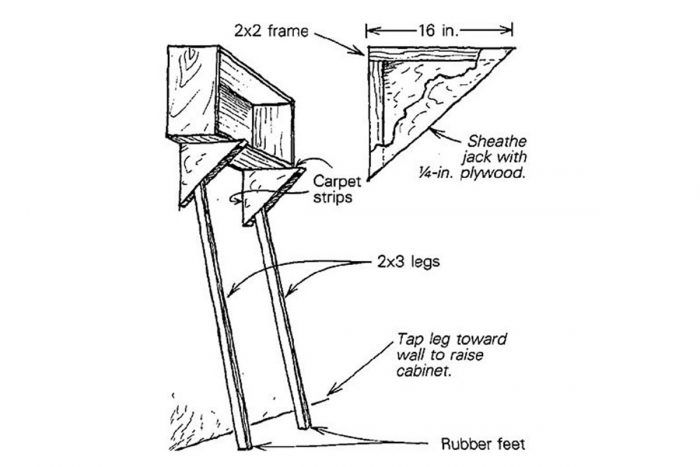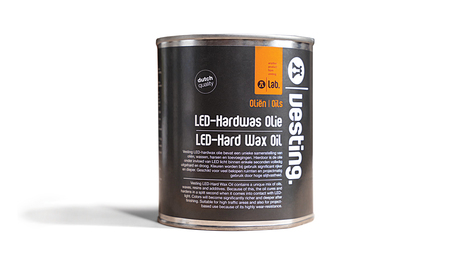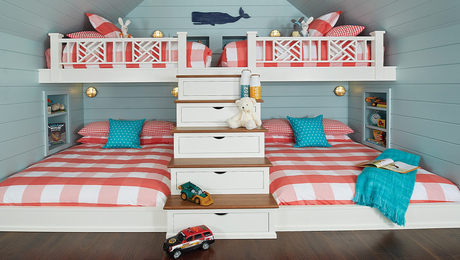
The drawing shows the jacks I use to install upper kitchen cabinets by myself. The jacks have a 2×2 frame covered with 1/4-in. plywood, and they’re braced with 2×3 legs. I line the backs and tops of the jacks with strips of carpet to keep them from scratching the walls, and I’ve got rubber feet on the legs to keep them from slipping as I adjust the height of the cabinets.
To use the jacks, I mark a level line on the wall to show the bottom of the cabinet. Then I place the jacks about 6 in. inside each end of the cabinet, and I set the cabinet on the jacks. Moving the legs in or out adjusts the height of the cabinet. When I’ve got it right, I fasten the cabinet to the wall through predrilled holes in the cabinet hang-rail.
Darryl B. Weiser, Dahlonega, GA
Edited and Illustrated by Charles Miller
From Fine Homebuilding #27





























View Comments
I use a 6" wide strip of 1/2" plywood as a ledger board upon which to set the bottoms of the wall cabinets, then I use a "kicker" under the front rail to hold it in place while I go across the kitchen to retrieve my screw gun that I invariably forget from time to time. I screw the ledger board to the studs in a few places, lining it up with the marks I made using my laser level. When I'm done, I dab a little spackling compound on the small hole left by the screw.
Not to dis all the creative solutions to problems that come under the headings of "not having enough hands or not being tall enough or strong enough," BUT there are lots of tools that solve the problems far more cheaply and effectively than most of the best jury rigs. Pump jacks, wall lifters, 3rd hands, scaffolding, even ladders.
When you come up against a problem, the first thing is to see if someone else has solved it already- don't re-invent the wheel- don't use five gallon bucket for a stool. Sometimes you're in the middle of something and you need a solution NOW, but even there, often the answer is to think ahead, so you don't have to make it up as you go.